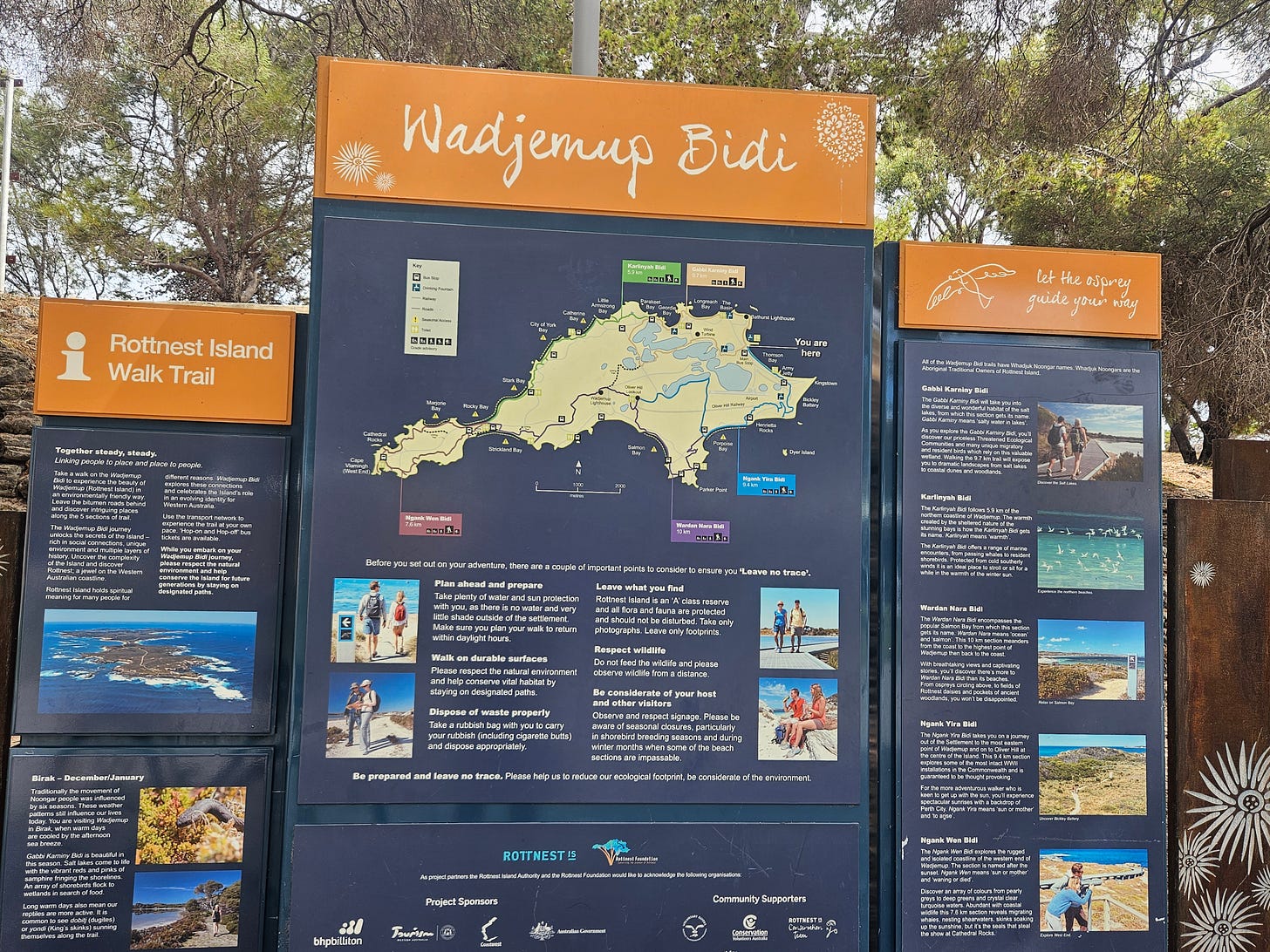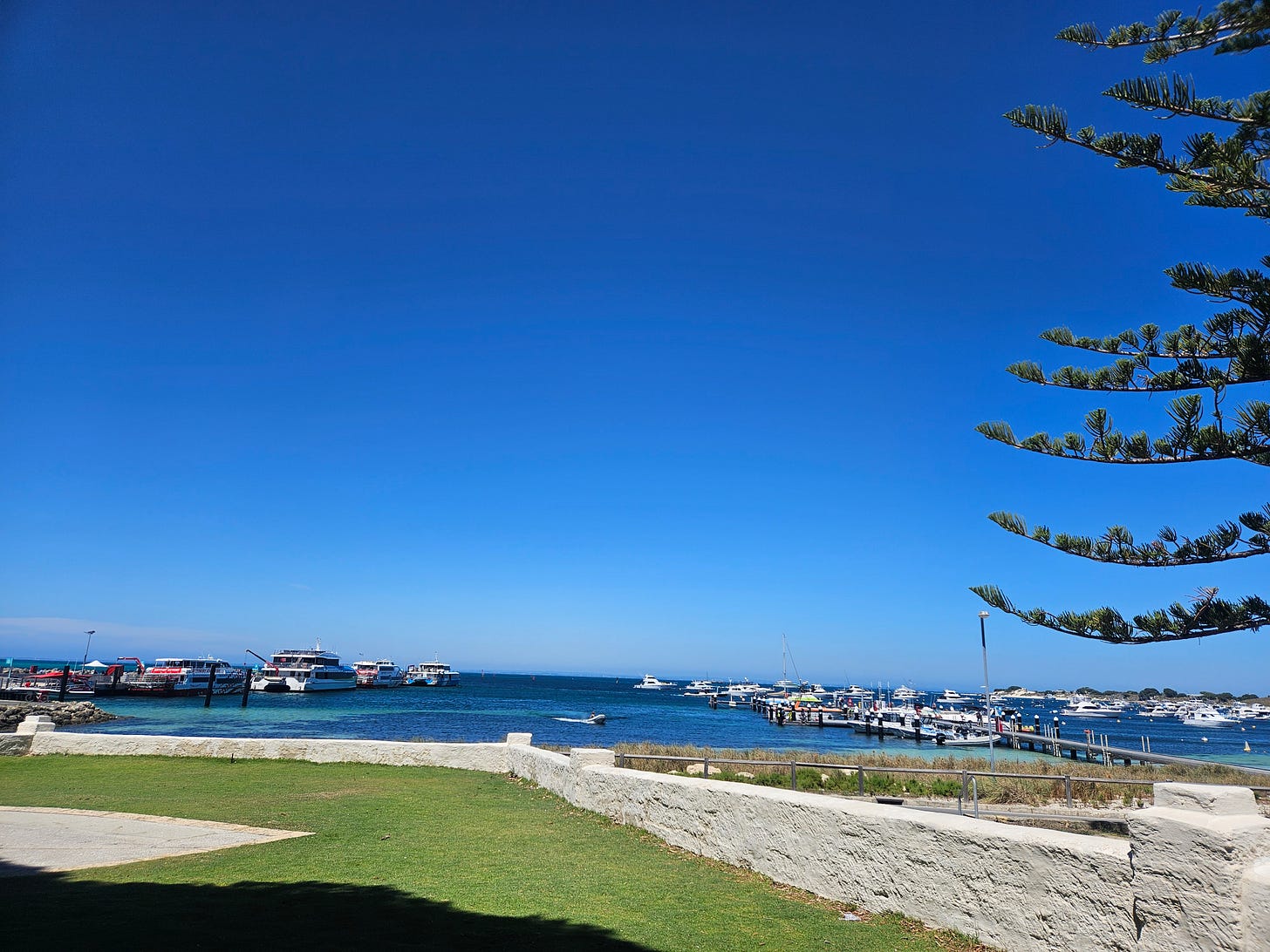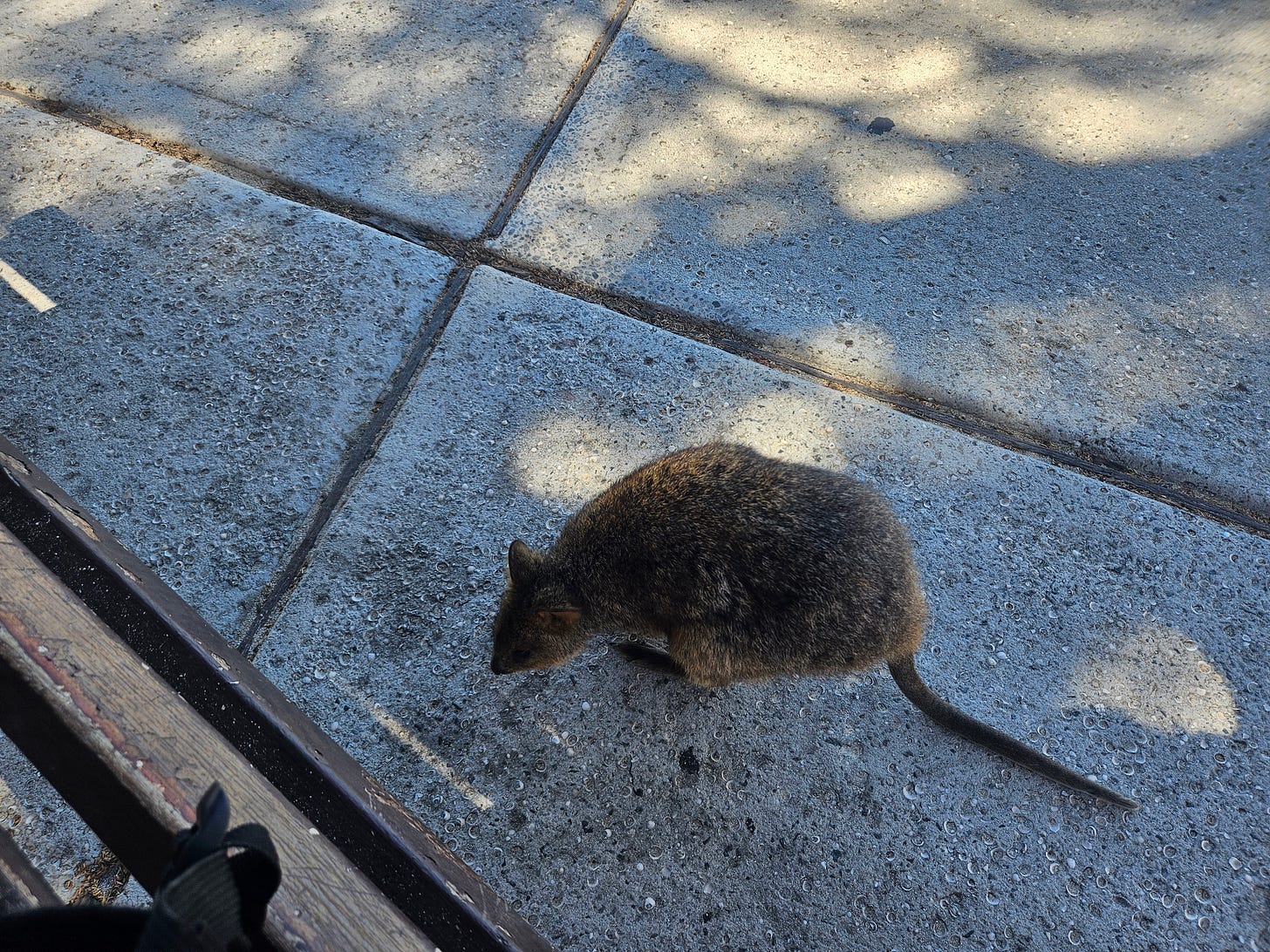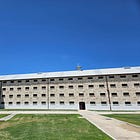The "Leisurely" Ride That Nearly Did Me In: A Bike Adventure on Rottnest Island
Western Australia is often regarded as one of the most stunning and diverse regions in the country, with deep connections to its Aboriginal heritage. And yet, many tourists forego this region due to its great distance from the major cities of the east coast.
As I had planned a ten-week stay in Australia for this trip, I knew I had enough time to include Perth and Western Australia in my itinerary.
One of the things I wanted to do was to visit Rottnest Island. Just off the coast from Perth and Fremantle, this island is famous for its rich history and culture, sun-kissed beaches, crystal-clear waters, and the adorable quokkas that call it home.

Aside from this obvious natural beauty, I was also eager to explore the Aboriginal heritage of Rottnest Island. I knew the island was once home to the Whadjuk Noongar people, who regarded it as a place of great spiritual significance and used it for ceremonies and gatherings. Years later, after colonization, the island was used as a penal colony where Aboriginals were sent. These contrasting purposes give the island its controversial heritage thus making it important to understand and appreciate.
After arriving by ferry, I quickly realized there are several ways to explore the island, including bus tours, boat tour around the island, hiking, and eco-friendly bike tours.
Given the island’s small size and the bike loop being only 21 kilometers, I chose to embrace eco-tourism, with cycling as the ideal way to discover Rottnest’s history, natural beauty, and culture. Little did I know, I was about to face a ride that would nearly do me in.
So let me start at the beginning.
On this particular day, I booked my trip to Rottnest. It was one of those blistering hot days in late summer, a merciless 36°C that made the very air feel thick and suffocating. I was expecting the temperature to be cooler on the island, but not today.
After adjusting my rented bicycle, I chose my route from the large information board in the Settlement area. My plan was to cycle the loop counter-clockwise, stopping at several beaches and lookout points along the way. I would eventually reach the Wadjemup Lighthouse in the center of the island before returning to the Settlement. The Wadjemup Lighthouse holds significant historical importance, both in Aboriginal culture and the island's colonial past. I was eager to explore this significance.
I set out on my bike, feeling well-prepared for the ride with two liters of water and a few snacks in my backpack. It should have been an easy pedal, but I soon realized I had seriously underestimated the challenge that lay ahead.
Within minutes, I found myself navigating a much hillier terrain than I had anticipated. For some reason, I had imagined the cycling route would be a leisurely, flat path, with the exception of the island’s centre where the lighthouse was located. It could not have been further from the truth.
Once I left the commercial area, I found myself tackling sandy ridges that were somewhat hidden amongst the rustic beach cottages and overgrown eucalyptus trees. Although there was some shade, the effort required was far more than I had expected, especially in the intense heat. It was here that the first signs of trouble began.
Under my backpack, my shirt was sticking to my back, and I was already sweating like a faucet. My heart rate soared with each pedal stroke, and I found myself gasping for breath. Soon, it felt like my chest was being squeezed in a vice. Visions of having a heart attack floating into my mind; not the sort of thoughts you want to entertain while on vacation!
I had to stop several times to catch my breath and take small sips of water. I had travelled less than one kilometre and I questioned if I had made the right decision in cycling around the island. I was truly surprised by how challenging the ride was; even though I consider myself a bit of a cyclist.
But I am not a quitter I told myself. Knowing that my first planned stop, Pinky Beach and Bathurst Lighthouse, were only another kilometre down the road, I forced myself to push on, through the heat and visible exhaustion.
As I arrived at Pinky Beach gasping for air, I paused to take another sip of water. My second 500ml bottle was now half empty as the heat and effort were taking a toll. Two liters of water seemed like plenty at first, but now I knew they were insufficient for the dehydration setting in.
As I gazed up at the Bathurst Lighthouse, I knew I no longer had the energy to climb its stairs. The stunning views of the turquoise waters and secluded beaches would have to wait for another visit. For now, I needed shade, water and rest.
I struggled to catch my breath, and no matter how hard I tried to steady my racing heart, it only seemed to beat faster. The world around me felt like it was spinning, and for a moment, I wondered if I might faint right there on the side of the trail. I glanced around, wondering if anyone else would notice or come to my aid. This was one of those moments when solo travel felt far from enjoyable.
Thankfully, I spotted a picnic shelter nearby, and with a sense of desperation, I made my way toward it. As I leaned the bike against the wooden post, I collapsed onto the bench, feeling like the life was draining from my body. The moment I stopped moving, I was hit with a wave of exhaustion so profound that it felt like the earth itself was pulling me down. My breath came in ragged gasps, and I was sure I was going to pass out. My vision grew dimmer, and I felt as though my body had betrayed me.
In cycling terms, this is what’s known as “bonking”—when your body runs out of energy and hits an abrupt wall. But how could this be happening to me after barely two kilometers? I had barely started! It didn’t make sense. My brain was struggling to reconcile what was happening with the physical reality of my situation. I wasn’t that far from the settlement, so why was my body acting like I had just completed a marathon?
From my cycling days, I knew I needed food, and fast. Without it, I wouldn’t be able to get back to safety, let alone finish this adventure. I searched through my bag and found an apple and an energy bar, though eating them was a struggle. Still, I forced myself to consume them, and gradually, I felt my body begin to stabilize. The darkness at the edges of my vision receded, and my breathing became less ragged. It wasn’t a miracle cure, but it was enough to give me the strength to get back on the bike. I knew there was no way I could complete the loop around the island or visit the Wadjemup Lighthouse at the center. The rest of Rottnest’s sights would have to wait for another day.
Once I felt like I could move again, I gingerly mounted my bike and began the slow, careful ride back to the settlement. Every pedal stroke was an act of willpower. As I neared the settlement, I spotted the nursing station and wondered how well-equipped they would be if I had had a heart attack. I’ll never know, but I can only hope they provide assistance for urgent medical issues.
When I finally reached the settlement, I didn’t hesitate to return the bike. Exhausted but relieved, I made my way straight to the beach, craving the cool, refreshing embrace of the water. It was cooler than I had expected. As I waded into the ocean, I let the soothing waves wash over me, easing the tension in my body and calming my racing thoughts.
Floating in the water, I took a moment to reflect on the experience—the overwhelming heat, the struggle to keep going, and the near collapse I had narrowly avoided. In that moment, I felt a deep sense of relief and gratitude, not just for surviving the ride, but for the strength I hadn't realized I had. The ocean's gentle rhythm helped to wash away the exhaustion, leaving me with a newfound appreciation for both the island and my own resilience.
Feeling at ease, I found a restaurant with a stunning view of the island’s coastline. I ordered a cold drink, sat back, and let the ocean breeze ruffle my hair as I watched the quokkas playfully wander nearby. Their carefree behavior was a sharp contrast to the chaos I had just endured, and I couldn't help but smile. Though the bike ride had been tough, I realized I had made it through, still breathing and with a deeper appreciation for the island's beauty.
The rest of Rottnest Island would have to wait for another day. For now, I was content to just sit back, relax, and reflect on my little eco-adventure that nearly did me in.
You might also be interested in this if you are staying in Fremantle:







I really enjoyed reading about your Rottnest Island day — it’s funny how a place can be so beautiful and yet leave you feeling completely wiped out by the end (esp with those temps!). I could almost feel that mix of sunburn, tiredness, and satisfaction you described. Sometimes those are the adventures that stick with you the most. I'm glad you were able to relax at the end with the quokkas!
While i'm more familiar with Fahrenheit vs Celsius, my heart and face began to sank when you mentioned that temperature as I know that's quite hot. Adding on what sounds like high humidity and that is just a recipe for disaster. I give you a ton of credit for giving it your best shot, but sometimes it's just not meant to be. Glad you got to at least enjoy the day sitting and relaxing in and by the water. To me, those kind of hot days just scream "take a break and relax!"